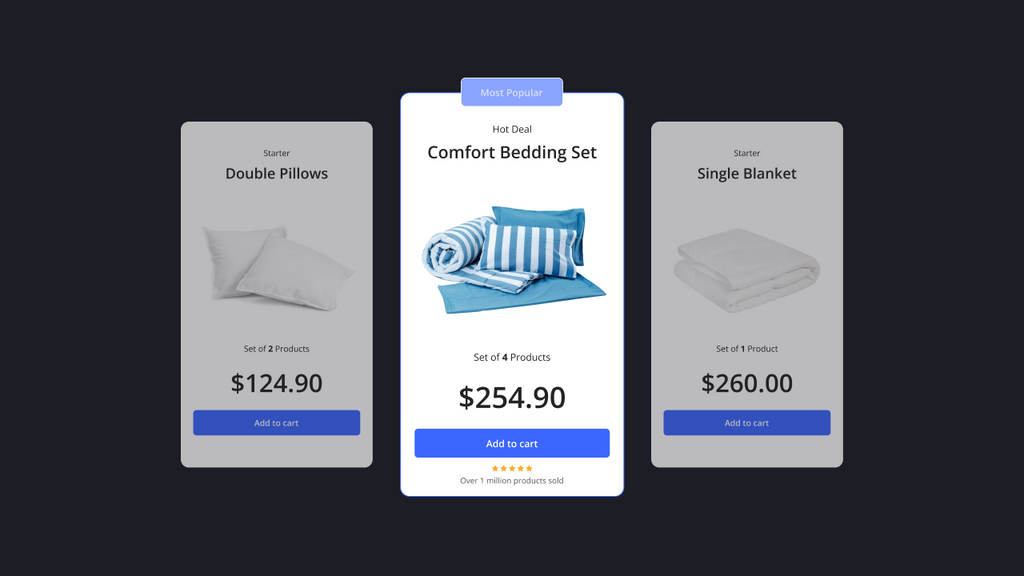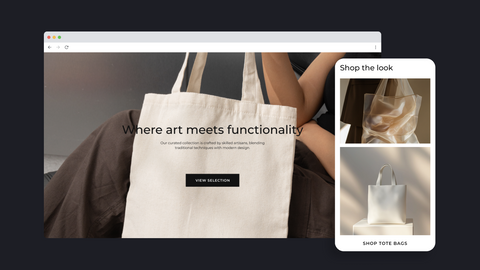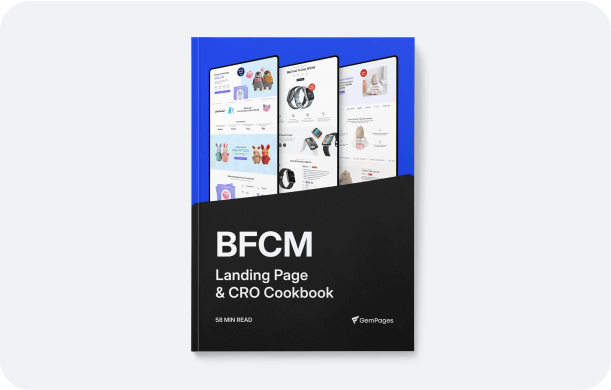How To Sell Blankets And Pillows On Shopify: Tips & Tricks From Experts

If you’re looking to sell blankets and pillows on Shopify, now is the perfect time to dive into this eCommerce niche. With the right strategy, especially in custom-printed pillows and blankets, many sellers prove the potential is limitless. That’s why you can completely turn your business idea into a profit-generating machine, creating a brand that stands out.
Our blog today will clarify everything you need to know, from setting up your Shopify store to crafting a winning marketing strategy—all to help you launch a successful store.
Without further ado, keep scrolling to discover more!
Is Selling Blankets and Pillows Profitable?
Definitely yes. The bedding market has been booming, offering the foundation to sell blankets and pillows on Shopify for any business; even startups or sellers prefer scaling up their market. The latest numbers and insights below will reveal its incredible potential for success.
The rise of the global home bedding market
In 2023, the global home bedding market recorded USD 104.64 billion, which is attributed to the increase in consumer awareness of the importance of getting quality sleep for their well-being. Notably, as innovations and technologies are introduced, more and more brands are taking advantage of them to level up bedding products’ comfort, durability, and functionality.

Pillows segmentation is divided by type, price, application, and sale channels
Pillows can support your neck and back while resting, driving the highest market growth in the US, “from USD 3.15 billion in 2023 to USD 4.28 billion by 2030”, says Fortune Business Insight. Notably, polyester pillows are go-to choices thanks to their convenience in washing and drying.
When it comes to blankets, its market is forecasted to grow at a CAGR of 6.1 % from 2023 to 2030, with the largest revenue belonging to the Asia Pacific region reported by 2022. That said, the US market is expected to lead the global blanket market in 2030, driven by increasing consumer preference for premium, multifunctional blankets that cater to both comfort and style.
The change in consumer trends
Whether you sell blankets and pillows or not, it’s essential to look at consumer trends first.
About 71% of consumers are willing to use tactics, including bedding items like pillows and blankets, to ensure a good night’s sleep. They also prioritize better sleep as part of their self-care routines, making high-quality bedding a top purchase in their shopping list.
Besides that, a growing shift toward organic materials and ethically sourced products is driving you to take center stage with eco-conscious shoppers. However, to achieve the best results, be mindful of balancing your budget and manufacturing stage to ensure comprehensive designs.

Eco-friendly pillows are a potential market to enter for startups
Don’t forget to focus on the differences between customer personas to create targeted, useful designs. Families, for example, prioritize comfort and durability, while Millenials and Gen Z are drawn to customizable, tech-enhanced bedding that aligns with their home decor. Of course, with higher expectations, these consumers are often willing to pay a premium for your products.
Why Consider Shopify For Your Blanket And Pillow Store?
Despite the plenty of channels available, Shopify is highly recommended as one of the best eCommerce platforms for selling blankets and pillows online. Its versatile platform truly allows you to access a suite of tools to optimize your online store and streamline the sales process.
One of Shopify’s strongest advantages is its ease of use. Even if you’re avid eCommerce, you can quickly set up and manage your store with its drag-to-drop interface. You can also take advantage of CRO templates to create a professional-looking website without much effort.

Sellers can utilize CRO templates to optimize efforts for building store presence
Don’t worry about how to start with inventory management. With automated stock tracking, real-time updates, and the ability to manage multiple product variants, Shopify ensures a smooth and precise process. In addition, you can significantly improve your store’s visibility on research engines like Google or social media platforms thanks to its powerful built-in SEO tools.
Last but not least, Shopify is renowned for its excellent customer support, which is available 24/7, making you feel more comfortable asking for quick assistance. Otherwise, you can read the documents available from the Help Center to find proper solutions to regular problems.
How To Sell Blanket And Pillow On Shopify With 6 Steps
This section will guide you step by step in effectively selling blankets and pillows on Shopify. Whether you’re starting fresh or transitioning an existing business online, these 6 steps would be the essential preparation steps to build a standout brand from the early days.
Step 1 - Identify your niche and target audience
The first step in building a blanket and pillow business is to narrow your focus by defining your niche—what type of bedding items you will sell. You can start with eco-friendly bedding, luxurious silk designs, custom-printed pillows and blankets, or anything else you want to sell. However, keeping a clear niche will make it easier to position your brand in the future.
Besides that, always focus on your target audience’s demand. Tools like Google Trends or surveys can help you gain insights into what your audience truly values. For example, new parents may look for soft baby blankets, while the young might prefer minimalist, stylish designs. All of these factors contribute to your decision on the product design and functionality.

Google Trends helps retailers that sell pillows and blankets on Shopify update trends
Step 2 - Have a business plan
Your business plan should cover your specific goals and strategies to ensure you’re prepared for every step of the process. Here are the three key concerns you should consider in this step:
-
Revenue goals
You should have both short-term and long-term objectives to measure your store’s success. While short-term goals relate to specific sales numbers (e.g., 40 items in the first months), long-term goals are much “bigger” milestones, such as an annual revenue of $50,000. Trust us: break these larger goals into smaller, actionable steps to perform the best results.
You should also cover Shopify’s built-in analytics tools in your business plan. In fact, many sellers need to pay additional costs for advanced reporting and control over their sales process. If so, why don’t you take advantage of everything available? This will give you a competitive edge, ensuring you stay on track to meet short-term and long-term revenue targets.
-
Product costs and pricing
If you can not estimate your costs, setting profitable prices is impossible. You need to calculate all expenses, including materials, manufacturing, shipping, Shopify fees, and marketing costs. Don’t forget to take care of hidden costs, like packaging, taxes, or currency conversion rates.
One of the most common approaches is a cost-plus formula, where you add a profit margin to your total expenses. For example, if your pillow costs $25 to produce, you might sell it for $50 to cover costs and earn a profit of 50% per product. Whatever profit you’re aiming for, be sure to adjust everything based on your niche—luxury and budget-friendly products are not similar.

POWR is a powerful tier pricing tool for customizing a price table for your products.
Besides that, consider offering bundle deals or volume discounts through Shopify tiered pricing options to appeal to budget-conscious customers while increasing average order value. Compared to other platforms, Shopify might do much better in this area thanks to its flexibility and ease in creating compelling offers. Thus, let’s capitalize on this opportunity for your store.
-
Marketing strategy
Marketing helps drive traffic and convert visitors into customers, especially in the first days. That’s why a well-structured marketing plan is essential to appeal to customers effectively.
Let’s start by identifying the best channels for your target audience, such as social media (e.g., Pinterest, Instagram, Twitter), email marketing, website, or event banners and popup events. After that, you need to create a content calendar to ensure consistency, including product photos, UGC videos, customer reviews, and other promotions (e.g., ads and influencers).
In addition, you should plan for incentives, such as free shipping or limited-time discounts, to encourage purchases at special events like Christmas or Black Friday. All of these should be scheduled for at least a year to avoid overspending and reshaping your campaign if needed.
Step 3 - Design your blankets and pillows
Your designs are essential if you want to sell blankets and pillows on Shopify. The eCommerce market is now so competitive that hundreds of shops are established daily. Therefore, if your products are not attractive, it’s nearly difficult to kick off your sales.
It’s recommended that you identify a design theme that aligns with your target audience but reflects your brand identity. Don’t forget to consider trends in textiles, like weighted blankets or hypoallergenic materials, to ensure your blankets and pillows are both fashionable and practical.

Custom-printed pillows attract more attention from customers
Customization can also add a unique touch that customers value for gifts or home decor. Prioritizing using design tools, partnering with freelance designers for templates, or even having print-on-demand models are all ideal ideas to streamline this process. Lastly, you need to select high-quality materials like cotton, bamboo, and fleece to ensure comfort and longevity.
Step 4 - Source and manufacture your products
Now that you have ideas for designs and materials available, it’s time to seek proper suppliers. Below are the 3 common options that you can utilize for your business model:
-
Dropshipping
If you’re about to enter the eCommerce market, dropshipping is one of the thriving models that you should consider to optimize your budget. You don’t need to control your product inventory, as when a customer places an order, your supplier will ship the product directly to them. This is especially effective in reducing upfront costs and saving your budget for other activities.
However, you need to select suppliers carefully to ensure the best product quality. Always request product samples for in-depth checks, from materials to final looks. Don’t forget to ask about their delivery time, as longer lead times can negatively affect customer satisfaction.
-
Print-on-Demand (POD) fulfillment
Many sellers admit that Print-on-Demand (POD) blends the benefits of dropshipping with innovations in customizable blanket and pillow designs. Your customers can personalize their favorite products to their tastes, adding a unique touch to your offerings. This allows you to eliminate the need for inventory, reduce waste, and offer diverse designs without extra costs.

Printify allows sellers to upload custom designs for their blankets
Leading platforms like Printiful, Printify, or Gooten can ensure high-quality printing and quick turnaround times, as well as cater to various suppliers that meet your specific demands. They also easily integrate into the Shopify Admin Dashboard to automate order fulfillment seamlessly.
-
Local manufacturers
When you partner with local suppliers, you can ensure faster shipping times and better communication, making it ideal for sellers who value locally made products. You can also visit the manufacturing facility anytime to check and ensure standards are met. That said, you nearly have to pay a higher delivery cost, as there are limited resources for materials and humans.
Step 5 - Set up and optimize your Shopify store
Shopify makes setting up your store presence easy with customizable themes and built-in tools. You can start by selecting a theme that aligns with your brand’s style. Then, add clear, professional photos of your products and write detailed descriptions to make them stand out. Besides that, you need to ensure technical factors like user-friendly presence or fast loading.

GemPages helps build a well-structured, professional Shopify store
If optimizing your store feels overwhelming, consider leveraging landing page builders like GemPages. This app allows you to install for free and create stunning, conversion-focused pages without coding, making it perfect for beginners and experienced sellers alike. Notably, the drag-and-drop interface and customizable templates help save effort when building your pages.
Step 6 - Run promotion strategies
With a detailed market plan in step 2, you can start your promotion strategies to attract and convert customers effectively. It's easy to start by leveraging social media platforms like Pinterest and Instagram to showcase your blankets and pillows with high-quality visuals. Don’t forget to run targeted ads to increase your brand’s visibility among your desired audience.

Retailers can post their pillow and blanket designs on Pinterest
Your online store should also contain quality content that enhances your product's value. Consider creating blog posts, care guides, or styling tips for using custom-printed pillows and blankets to establish your brand identity in your customers' minds and drive organic traffic. Also, ensure that everything is optimized with the best SEO practices to improve your site’s ranking.
Regarding email marketing, you can utilize auto tools to collect data and send personalized promotions, seasonal offers, and loyalty rewards to your customers. This will help build stronger customer relationships by providing tailored content that resonates with their preferences.
Conclusion
To sell blankets and pillows on Shopify, you always need continuous learning and evolution. Focus on a niche market and diversify your business plan based on customer demand and market trends. Don’t forget to conduct eCommerce CRO testing frequently to help you stay ahead of your competitors, regardless of your business stage.
Visit GemPages blogs to learn more insights about eCommerce, Print-on-Demand, and Shopify.



 Facebook Community
Facebook Community Change Log
Change Log Help Center
Help Center











